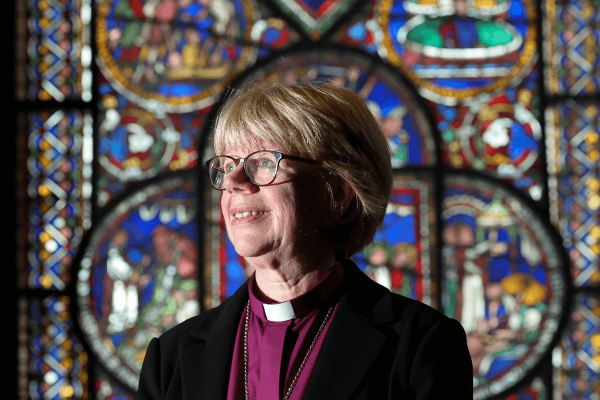THE FIRST TIME we see Samuel Maleski (Samuel Theis), he is lying in the snow outside his home, blood pooling at his head. Across French director Justine Triet’s mystery Anatomy of a Fall, the cause of Samuel’s untimely death will be debated ad nauseam. Was it suicide? Or was it murder?
Samuel’s wife, Sandra (Sandra Hüller), a successful writer, becomes the state’s prime suspect, and his 11-year-old son Daniel (Milo Machado Graner), who has limited vision, is the only witness. Viewed through the lens of a whodunit courtroom procedural, one might expect the film to track the facts to a clear truth. But as lawyers and experts atomize the scene — a spatter of blood here, an open window there — a lack of physical evidence pushes the prosecution to lean on emotional appeals, building a case for murder around the circumstances of Samuel and Sandra’s flailing marriage.
As the prophet observes in Proverbs, “The one who first states a case seems right, until the other comes and cross-examines” (18:17). But what can an outsider really understand of someone else’s marriage? As more witnesses take the stand, the court’s ability to service justice grows more inadequate. Witnesses and experts are shown to be partisan, their credibility undercut by the limits of their own expertise or trustworthiness. And yet, even as reliability falters, in the binary of the court, a verdict must be reached.
“It feels as if when we lack proof to make us sure how something happened, we have to look further,” says Daniel during an exchange with the prosecuting attorney. “We have to ask why it happened.”
But relationships, even the healthiest ones, are often unknowable, a disparate constellation of sentiments, agreements, and coordinated reactions. Understanding Sandra and Samuel’s marriage may be impossible. All that remains are stories told by the cunning and the desperate, insufficient forces looking to carry onlookers away on the winds of their own particular doctrine.
Without true knowledge, we cobble together stories built on partial wisdom and faulty logic. In her essay “The White Album,” Joan Didion famously contends that “we tell ourselves stories in order to live,” that “we look for the sermon in the suicide, for the social or moral lesson in the murder of five. We interpret what we see, select the most workable of the multiple choices. We live entirely ... by the imposition of a narrative line upon disparate images.”
Triet beckons her audience to a similarly disquiet reckoning, one exposited and therefore subverted by the drama onscreen and the medium of film itself. It is the insufficiency in all our stories, one that God alone can rectify.

Got something to say about what you're reading? We value your feedback!







